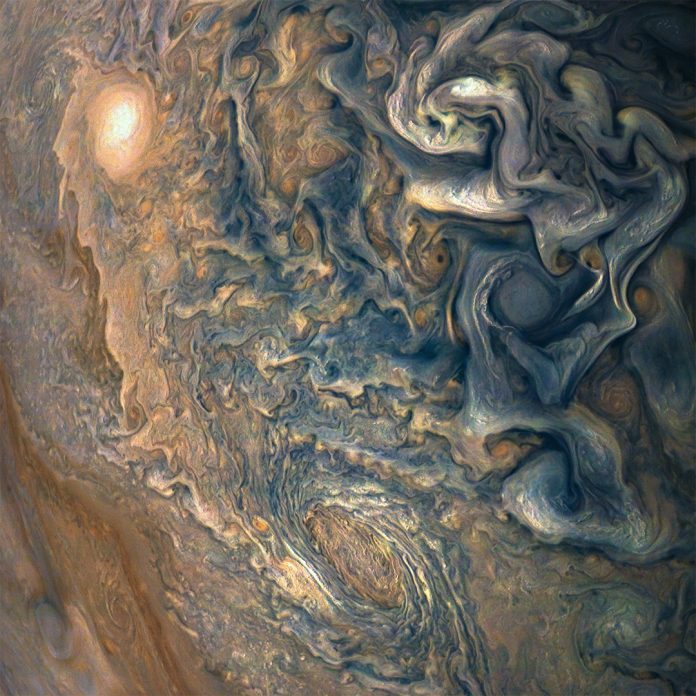
Planets Jupiter and Saturn to nearly ‘merge’ on Dec. 21 in rare celestial event
By Phillip Brents
While the planet Venus has alternately been called the “Evening Star” and “Morning Star” for its brilliance in the sky among our solar system’s eight recognized planets, the planets Jupiter and Saturn will combine forces to create a dazzling “Christmas Star” in the coming weeks.
It will mark the first time in nearly 800 years that a “double planet” will be visible in our skies.
The celestial event, called a planetary conjunction, will see the two outer gas giant planets appear to almost merge into a single point of light. At closest approach on Dec. 21 — coincidentally the date of the winter solstice — the planets will appear separated by just one-tenth of a degree in astronomical measurement or one-fifth the diameter of the Full Moon.
It will take expert vision to separate them.
The pairing is just by perspective, however.
In reality, Saturn will be twice as far away from Earth than Jupiter.
The orbits of the two planets align every 20 years but they haven’t been this close since the year 1226.
The upcoming celestial event, especially its timing near the Christmas holiday, will evoke images of the Biblical “Star of Bethlehem.”
The metaphysical tie-ins cannot be ignored.
For many, the Great Conjunction of 2020, as it is being called, should serve as an inspiring event to light up these dark and uncertain times, especially near the holiday season.
For some, it will be a breathtaking event of a lifetime. The two planets will not be this close again until 2080.
To view the Great Conjunction look to the southwest about 30 to 45 minutes after sunset. Both planets will be low in the sky but easy to pick up due to their brightness, particularly Jupiter, which will be blazing at magnitude -2.0. Saturn is fainter at +0.6 magnitude.
Watch them narrow their distance to one another over the coming days, appear to almost merge, then move farther apart during the final week in December.
A clear southwestern horizon is desirable, with as little obstruction from trees and structures as possible. Views from a harbor or hillside could produce some striking vistas, especially against a deep blue sky.
Think photo opportunity.
Binoculars and small telescopes will help reveal more detail, though the planets’ disks may not be overly pristine due to atmospheric turbulence.
Jupiter and Saturn will fit into the same telescopic field of view through an eyepiece at moderate magnification.
Jupiter is the largest planet in our solar system with an equatorial diameter of 88,846 miles, about 11 times the diameter of the Earth and 317.8 times its mass. Distinctive purplish cloud bands along its equator stand out under magnification.
Saturn, the second largest planet in our solar system and noticeably yellow in color, stands out due to its magnificent ring system. It has an equatorial diameter of 74,898 miles, about nine times larger than Earth and 95 times its mass.
What was the world like in 1226?
- Genghis Khan was still conquering large swaths of Asia a year before his death.
- Europe was still generations from the Renaissance. The telescope, for instance, would not be invented for another 382 years.
- Mesoamerica had yet to experience European conquest.
The Lowell Observatory (Lowell.edu) plans to offer a livestream of the event on Dec. 21.
For more information, visit the websites at skyandtelescope.org and space.com.
"dazzling" - Google News
December 17, 2020 at 09:07AM
https://ift.tt/3ntHY8J
Look for dazzling 'Christmas Star' to light up the holidays - Gardena Valley News
"dazzling" - Google News
https://ift.tt/2SitLND
Shoes Man Tutorial
Pos News Update
Meme Update
Korean Entertainment News
Japan News Update
Bagikan Berita Ini
















0 Response to "Look for dazzling 'Christmas Star' to light up the holidays - Gardena Valley News"
Post a Comment